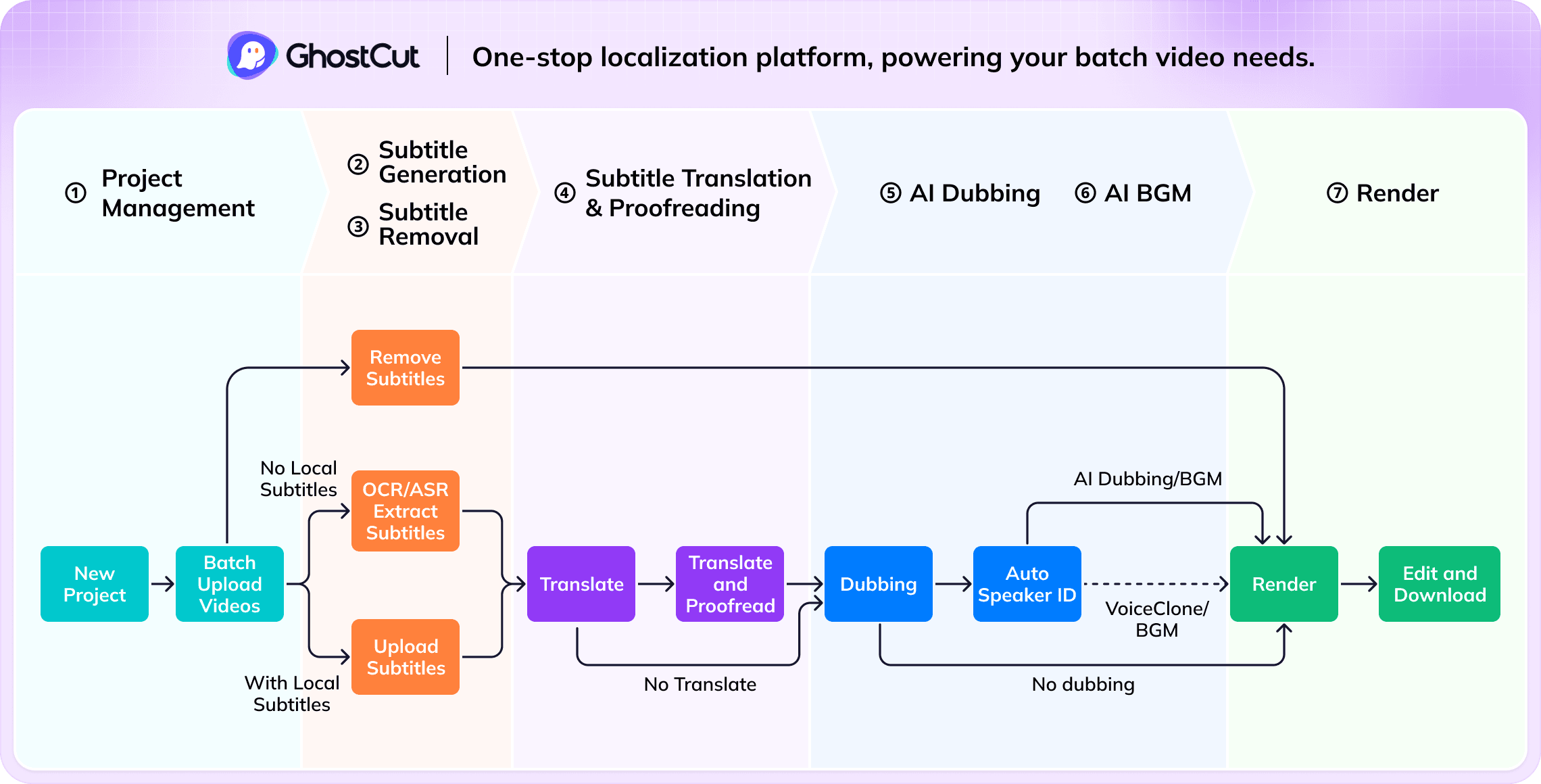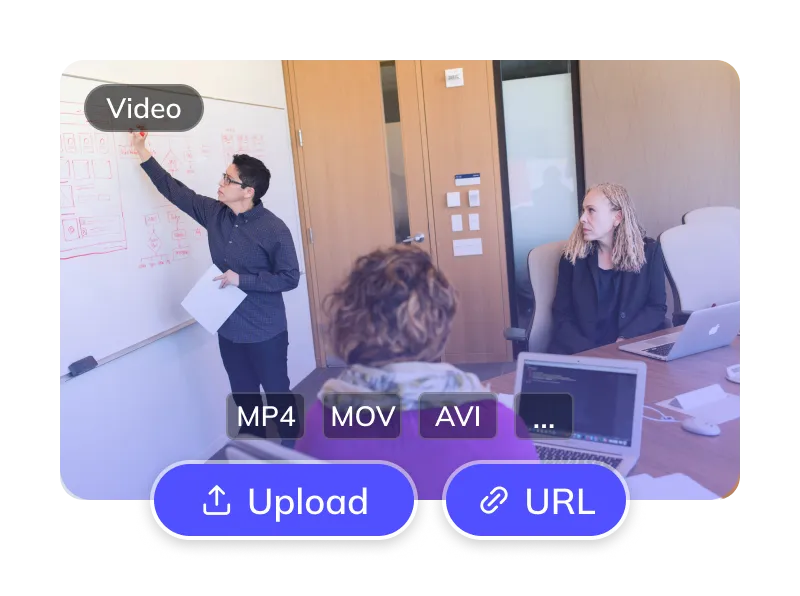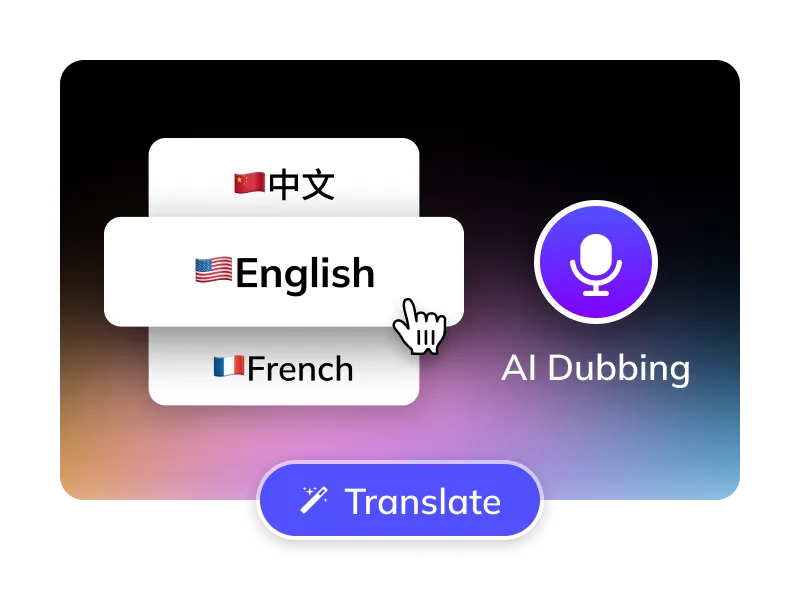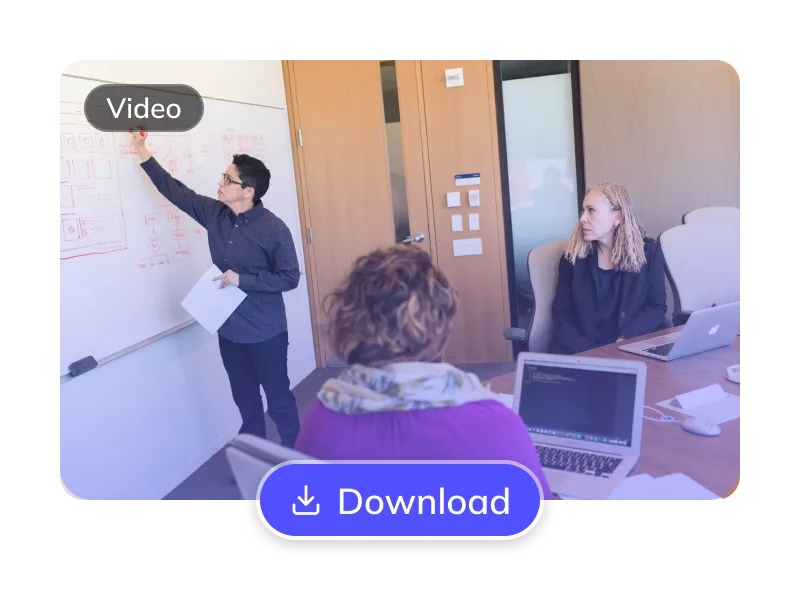How to Translate Korean Videos to English ?
Translate Korean Videos to Chinese in 3 Easy Steps
Trusted by 1,500,000+ Global Creators and Businesses
Why GhostCut for Your Video Translations?
GhostCut is your all-in-one AI solution for translating Korean content into natural, engaging Chinese.
Effortless Project Management
Manage Korean assets, subtitles, & Chinese videos. Batch process projects efficiently.
Pinpoint Chinese Accuracy
Up to 99.5% accurate. Optimized for Korean-to-Chinese with LLM calibration & multi-agent review for culturally fluent Chinese translations.
Lifelike Chinese AI Dubbing
Choose from diverse, human-like Chinese AI voices (US/UK accents). Emotion-cloning technology captures original tone for natural Chinese delivery.
Flexible Korean Subtitle Options
Optionally erase original Korean hardsubs for a clean slate. Translate embedded Korean subtitles directly.
Smart Multi-Speaker ID (Korean)
AI detects multiple speakers in Korean videos. Assign or clone distinct Chinese voices per character, with cross-episode consistency for complex Chinese dubs (dramas, interviews).
Efficient Batch Processing & API
Batch translate and dub 100s of Korean videos to Chinese at once. Seamlessly integrate with our robust API.
Versatile BGM Control
Keep or mute original BGM. Our unique tech can also isolate sound effects, meeting diverse copyright and distribution needs.
Unbeatable Value
Flexible Korean-to-Chinese plans. Try core features free. Automated pro service from just $0.1/minute.
Easy Online Access
No downloads. Instantly translate Korean videos to Chinese online. Works on Windows, Mac, & major mobile browsers for cloud processing anywhere.
The GhostCut Edge: Unmatched Accuracy, Speed, and Value.
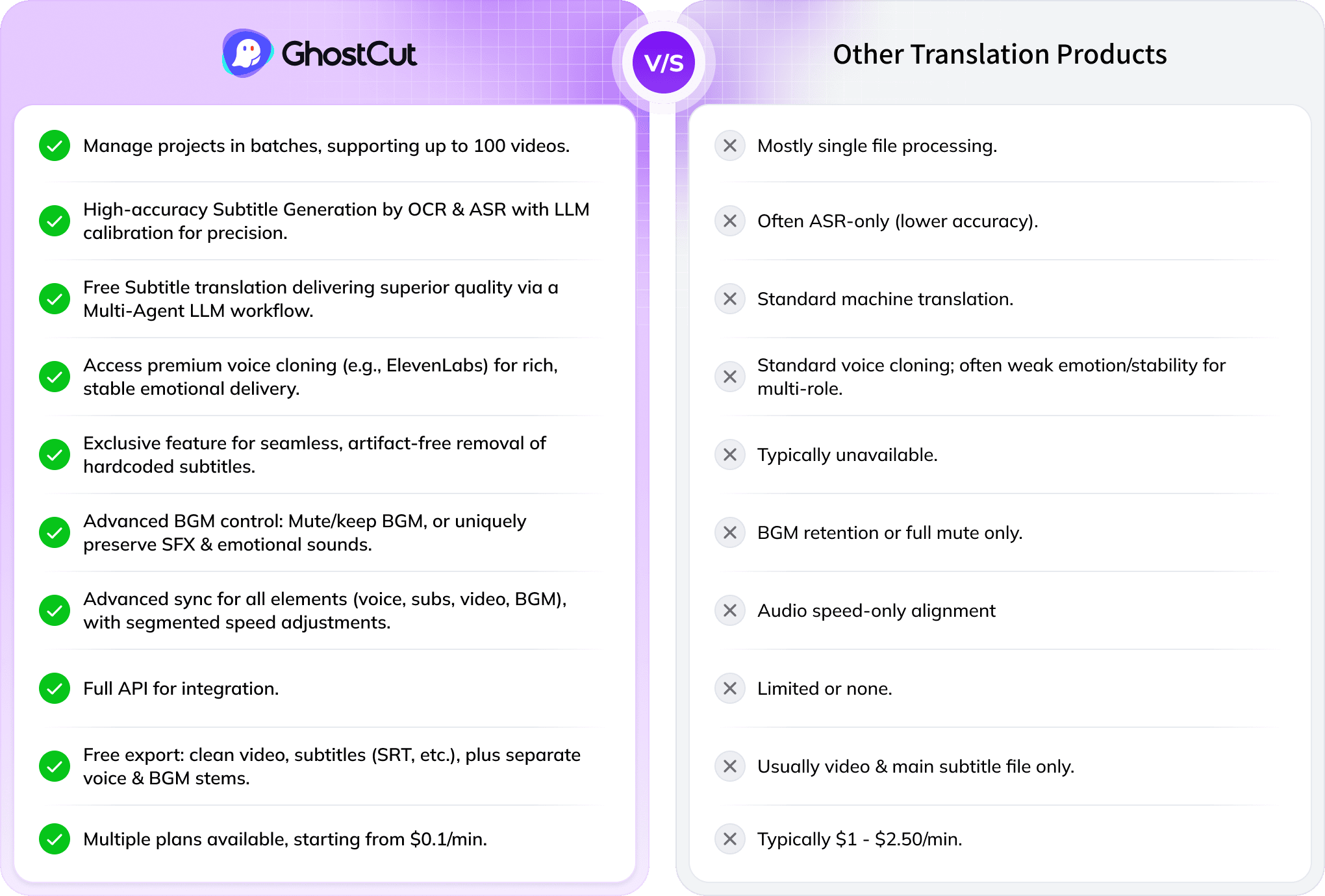
Every Algorithmic Optimization, Engineered for Quality Chinese Video
Mastering Long-Form Korean Drama & Multi-Character Dubbing
Translating a 100-minute Korean drama with 4000+ lines and many characters into Chinese is tough. Standard AI struggles to tell speakers apart, causing errors. GhostCut’s multi-modal AI (video, voice, text) excels in long-form, multi-speaker content, ensuring accurate, consistent character voices across entire series.
Translate Now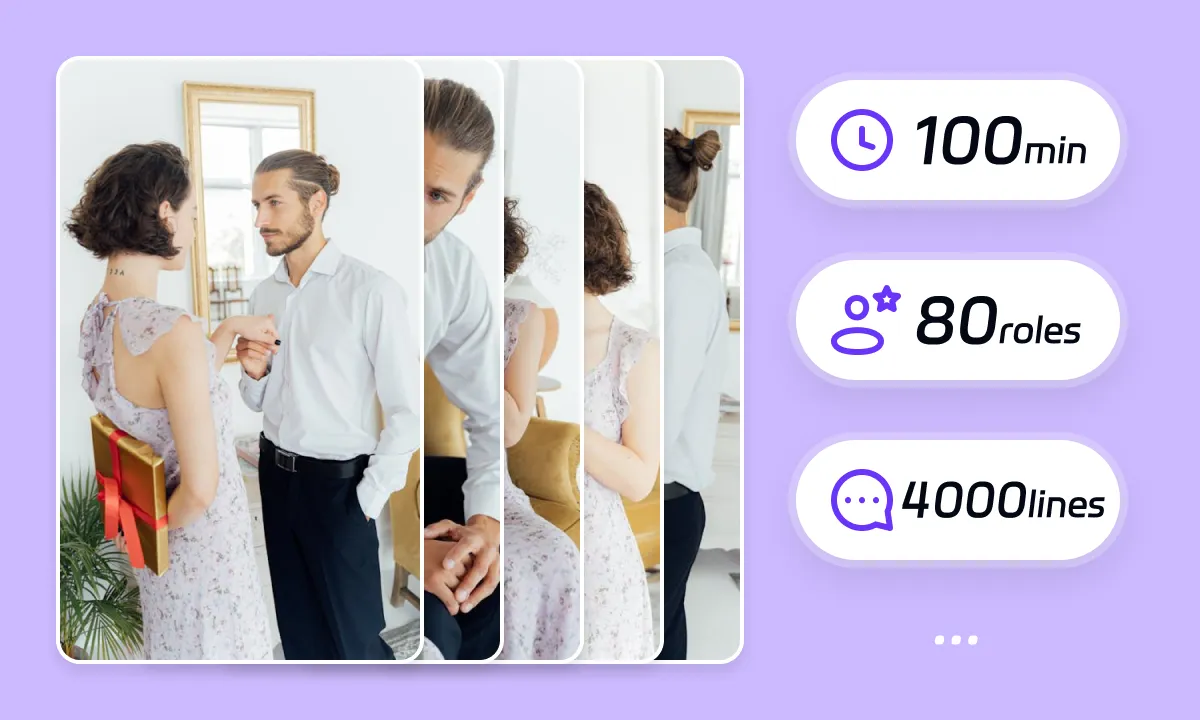
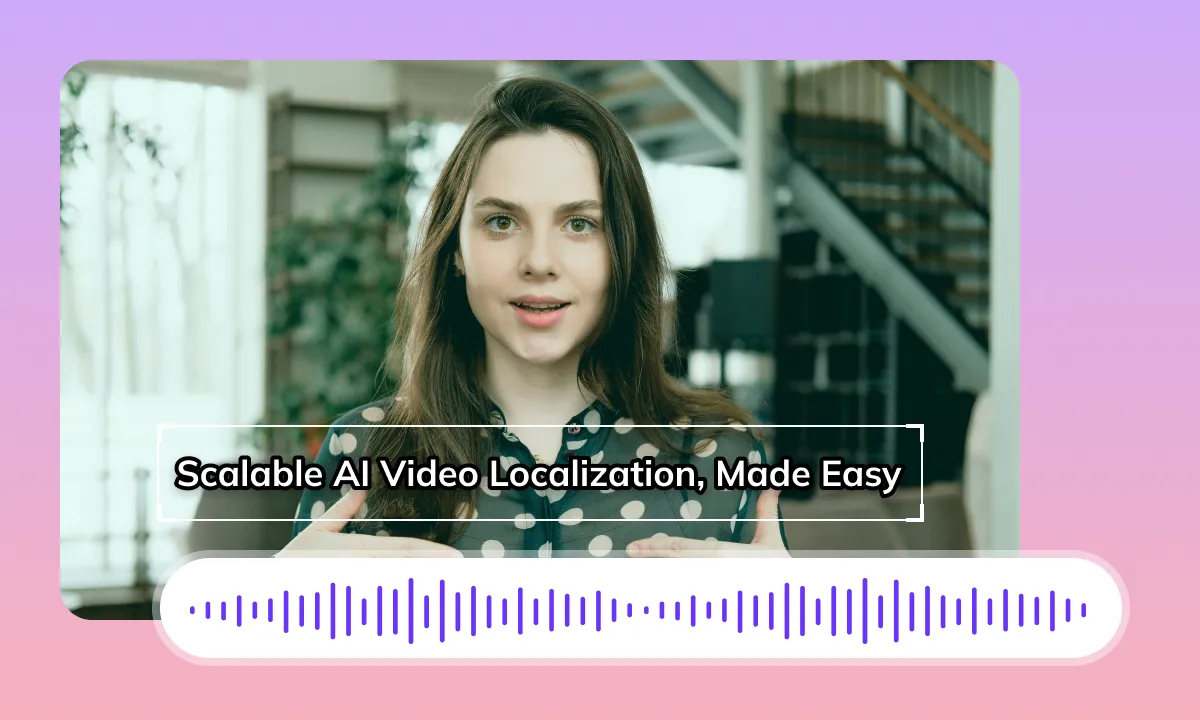
Seamless Chinese Dubbing & Perfect Lip-Sync
GhostCut ensures natural Chinese audio flow by treating related subtitles as whole ideas for TTS. It then precisely times new Chinese subtitles. Since Korean-to-Chinese translation can change speech length, our AI expertly adjusts the new Chinese audio, subtitles, video, and BGM to maintain perfect sync, just like a seasoned editor.
Translate NowBoost ROI with Flawless Korean Subtitle Removal
Original Korean hardsubs can limit your video's global appeal. GhostCut’s AI doesn't just blur; it intelligently reconstructs the background obscured by Korean subtitles, even complex ones, for a perfectly clean, high-quality visual. This means better viewer engagement, longer watch times, and higher ROI.
Translate Now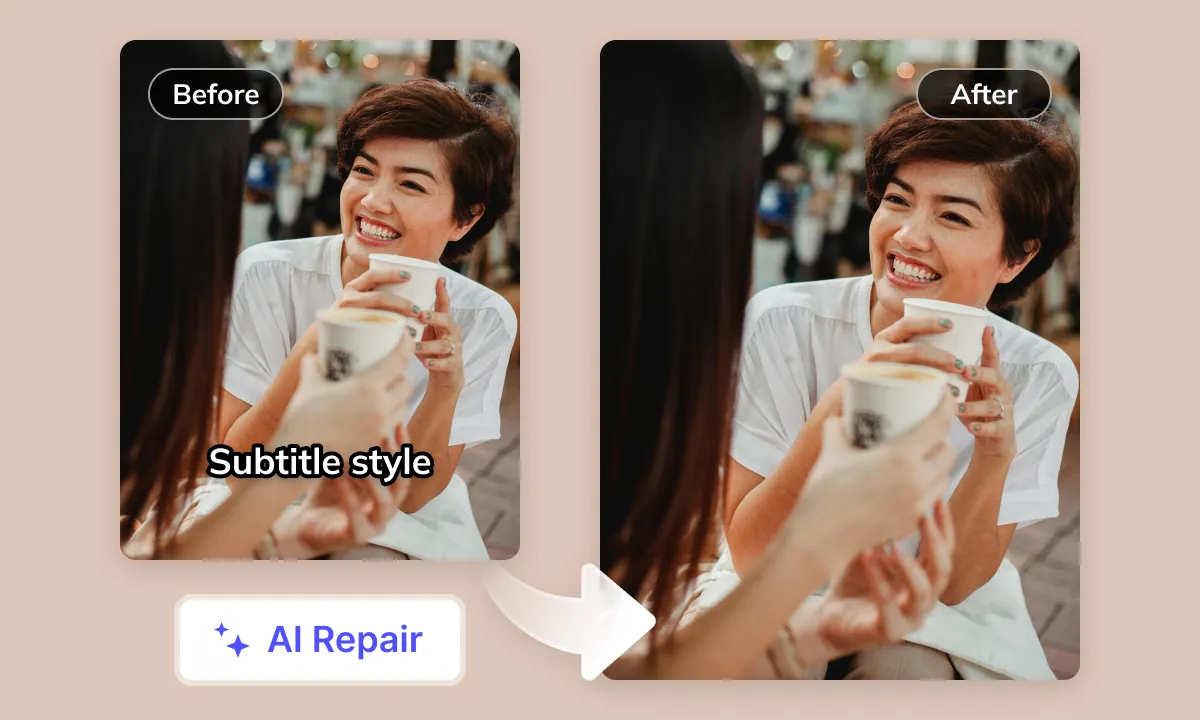
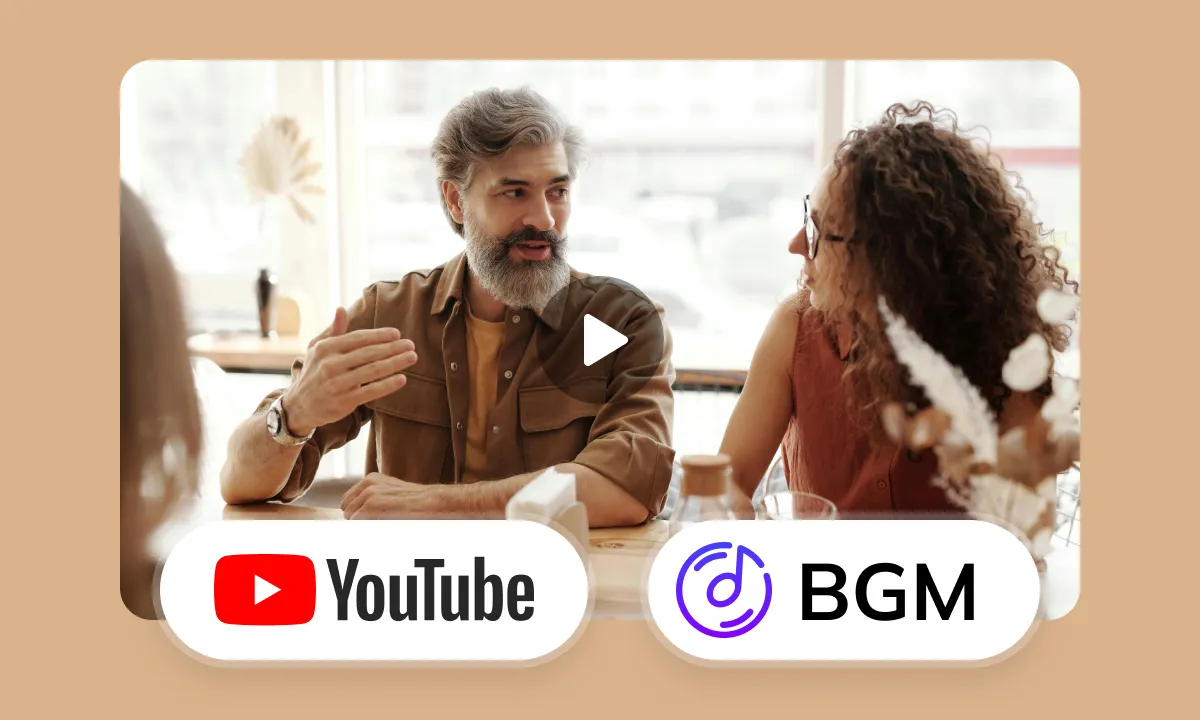
Smart Audio Control for YouTube Creators
Navigating BGM copyright on YouTube is tricky. GhostCut’s advanced audio separation isolates Korean dialogue for translation, while intelligently managing BGM, sound effects, and even emotional expressions. Our "Keep SFX, Remove Music" option is a creator favorite for avoiding copyright issues without losing your video’s impact.
Translate NowYour Korean Videos Deserve to Reach Chinese Viewers
Vibrant Korean content, including dramas, K-pop, and food vlogs, struggles to reach the vast Chinese market due to language barriers. Videos on platforms like YouTube and TikTok often lack quality Korean-to-Chinese translation or dubbing. This hinders understanding for Chinese users, negatively impacting viewing experience, interaction, and content reach in China. Professional, efficient AI video translation and dubbing solutions are urgently needed
Korean Video Translation to Chinese: Insights and Challenges
Hardcoded Subtitles Audio Interference
If the source video contains hardcoded subtitles or Korean voiceovers, mishandling them can significantly disrupt the viewing continuity and overall experience for Chinese audiences
Korean Grammar, Vocabulary, Cultural Nuances
Korean grammar (SOV) differs significantly from Chinese (SVO), and its complex honorific system, unique slang, pop culture references, vocabulary usage, and idiomatic expressions are vastly different from Chinese. Accurate Korean-to-Chinese translation requires overcoming these linguistic and cultural barriers to prevent loss of original meaning or misunderstandings from literal translation
Subtitle Layout Readability
Although both Korean (Hangul) and Chinese characters are compact ideographic or syllabic scripts, when translating Korean to Chinese, careful attention is still needed for subtitle segmentation, characters per line, and overall layout. This ensures Chinese viewers can read comfortably, avoiding information overload or insufficient display time
Speech Rate Synchronization Complexity
Korean spoken language has variable speech rates, and its information delivery rhythm differs from Chinese conventions. When performing dubbing or generating subtitles, precise adjustment of the timeline is required to ensure the translated Chinese audio or subtitles maintain natural synchronization with the original video's visuals and speech rhythm
Challenges in Korean AI Recognition
Different Korean dialects, overlapping voices in multi-speaker conversations, and background noise can all pose significant challenges to the accuracy of automated Korean speech recognition
Scarcity of High-Quality Chinese AI Voices
While the selection of Chinese AI voices is growing, it remains relatively difficult to find high-quality AI voices that are emotionally rich, naturally fluent, and accurately convey the original video's mood. These voices often sound mechanical
Technical Challenges of Lip Synchronization
Korean and Chinese have different pronunciation methods and mouth shapes. Therefore, achieving a high degree of lip synchronization between the translated Chinese dubbing and the characters in the original Korean video is a precise and technically demanding task
Ideal AI Video Translation Workflow
A top-tier Korean-to-Chinese AI video translation should feature: accurate Korean speech recognition; profound understanding and idiomatic conversion into Chinese text (considering Korean's unique grammar, culture, and context); generation of high-quality, expressive Chinese AI voiceovers (with best possible lip-sync); and automated precise editing and alignment of audio and video
Tackling Video Translation Challenges with AI Empowering your Korean content for any worldwide scenario.
Your All-in-One AI Translation Studio
GhostCut offers more than just Korean-to-Chinese translation. It's a complete AI-powered workflow: subtitle extraction 、 removal 、 translation and proofreading to multi-character dubbing , BGM processing, and final rendering. Go from Korean source to global-ready videos, effortlessly.
